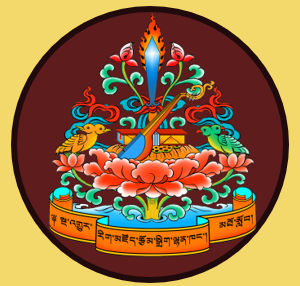Sutras are the teachings of Lord Buddha and other great masters that explain conditional phenomena, and their empty nature.
Tantras are teachings of Lord Buddha and other great masters that describe wisdom deities and secret methods to realise the ultimate nature.
Sutras say that all beings are endowed with the seed of awakening, which is called “buddha nature”. One must strive for a long period of time to attain buddhahood.
But in tantras, the luminous nature of enlightenment that is endowed with all the qualities of a buddha is inherent in all beings. This is the ground of pacification that is like the sky, defiled mind of sentient beings is like clouds in the sky, and generation and completion practices are like the wind that sweeps away the clouds. Through these practices one can attain buddhahood within a short period of time.
Though there is no difference in the nature of enlightenment attained through the paths of sutra and tantra, their ways of attaining it differ. According to sutra, one must mainly practise and meditate on “the four immeasurables” and “the six transcendent perfections” to attain enlightenment. However, there is no valid reasoning in the sutras to show all appearances as the pure mandala of wisdom deities, and the sutra teachings do not stress perfect equality in the same way as in the tantras. Hence, the practitioners of sutra are unable to realise the ultimate nature as the initial basis for their practices. Moreover, sutras mainly stress what to adopt and abandon.
But in tantra, all phenomena are realised as equal and inseparable from the ultimate nature. There is no conceptualisation as to what to adopt and abandon. So, tantric practitioners directly realise the ultimate nature instantly.
According to sutra, one should contemplate disgusting things to subdue attachment; meditate on love to subdue anger; and concentrate on the flow of one’s breath to subdue ignorance. Besides these there are also many other methods to subdue these “three poisons”.
But in tantra, the three poisons are realised as indivisible from “the three wisdoms”, so they are not abandoned or subdued but are turned into the path of enlightenment. Moreover, there are many secret paths to realise all afflictive emotions as the pure display of wisdom deities. So, the path of tantra is easier and swifter than that of sutra.
Tantra teachings are esoteric, so not everyone can take this path. The path of tantra can and must only be practised either by the people of higher faculties or those who have unshakable devotion to its methods.
Since the tantric path allows one to attain buddhahood swiftly with many skilful means, it is called “the vehicle of fruition”.
As the path of sutra leads to enlightenment after striving for a long period of time, it is called “the vehicle of cause”.
The path of tantra may be swift, but if it is not embarked upon properly then the outcome is worse than that of sutra, so one must always choose the right path with wisdom.
By Ridzod Editors
NREC, 2018


